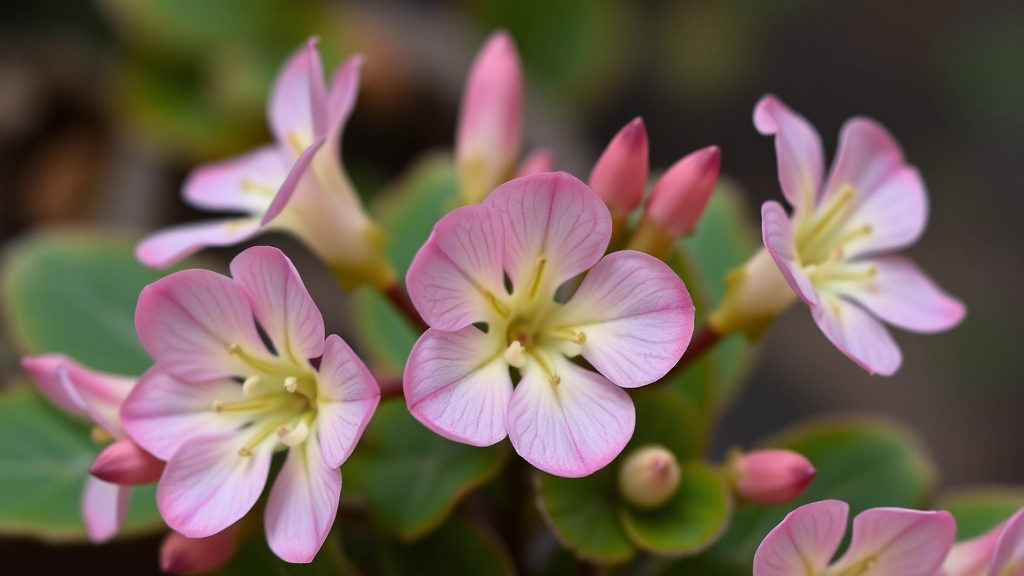Kalanchoe Blossfeldiana Taxonomy
As a plant enthusiast and researcher, I’m thrilled to delve into the fascinating world of Kalanchoe blossfeldiana taxonomy. This vibrant succulent, known for its stunning flowers and resilient nature, has captured the hearts of gardeners worldwide. But there’s so much more to this plant than meets the eye.
In this article, we’ll explore the intricate classification of Kalanchoe blossfeldiana, from its family ties to its unique characteristics. We’ll uncover how its taxonomy influences its care, adaptability, and even its potential medicinal uses. Whether you’re a curious beginner or a seasoned plant lover, prepare to gain a deeper appreciation for this remarkable species.
Overview of Kalanchoe Blossfeldiana
Let’s chat about Kalanchoe Blossfeldiana, shall we?
This little beauty’s got quite the reputation in the plant world.
You might know it as the Flaming Katy or Christmas Kalanchoe.
It’s a stunner, no doubt about it.
But here’s the thing – it’s not just a pretty face.
This plant’s got some serious tricks up its sleeve.
First off, it’s a succulent. Yep, one of those water-storing champs.
But unlike its desert cousins, this one’s all about the flowers.
We’re talking clusters of vibrant blooms that’ll make your eyes pop.
Reds, pinks, oranges – you name it, Kalanchoe’s got it.
Now, don’t let its exotic looks fool you.
This plant’s tougher than it looks.
It’s a low-maintenance superstar that’ll thrive even if you forget about it for a bit.
Perfect for us plant-lovers who sometimes get a bit… distracted.
But here’s where it gets really interesting.
Kalanchoe Blossfeldiana isn’t just a pretty houseplant.
It’s got some serious potential in the medical world too.
Researchers are eyeing it up for all sorts of treatments.
From fighting inflammation to potentially battling cancer cells.
Talk about a plant with purpose, right?
So, whether you’re a green thumb or a curious newbie, Kalanchoe Blossfeldiana’s got something for everyone.
It’s a plant that keeps on giving, and we’re just scratching the surface here.
Stay tuned, because we’re about to dive deeper into what makes this little powerhouse tick.
Taxonomic Classification
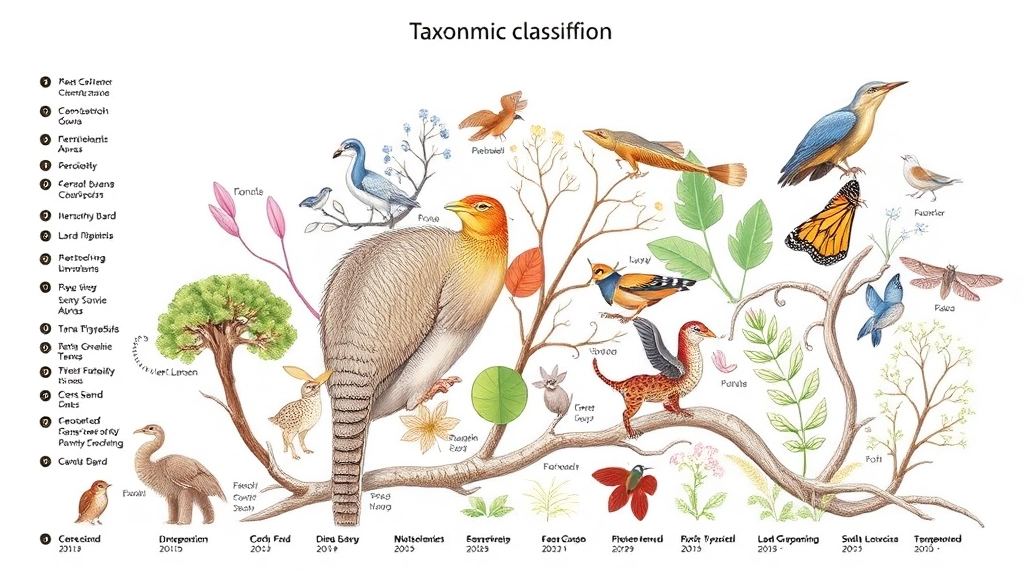
Alright, let’s dive into the taxonomic classification of Kalanchoe Blossfeldiana. This is where we get to geek out a bit on the plant’s family tree, but don’t worry, I’ll keep it simple and engaging.
The Plant Kingdom’s Family Tree
Ever wonder where Kalanchoe Blossfeldiana fits in the grand scheme of things? Let’s break it down:
- Kingdom: Plantae (because, well, it’s a plant)
- Division: Tracheophyta (it’s got those fancy vascular tissues)
- Class: Magnoliopsida (flowering plants, baby!)
- Order: Saxifragales (a fancy name for a group of flowering plants)
- Family: Crassulaceae (the succulent squad)
- Genus: Kalanchoe
- Species: K. blossfeldiana
Now, you might be thinking, “Why should I care about this?” Well, understanding where our little Kalanchoe fits in helps us get why it behaves the way it does and how it’s related to other plants we might know and love.
The Succulent Connection
Here’s a fun fact: Kalanchoe Blossfeldiana is part of the Crassulaceae family. Know what else is in this family? Jade plants and Echeverias! They’re like cousins in the plant world. This family connection explains why Kalanchoe Blossfeldiana is a succulent â it’s a family trait!
What’s in a Name?
The genus name “Kalanchoe” is thought to come from a Chinese name, while “blossfeldiana” honors Robert Blossfeld, a German botanist. It’s like the plant world’s way of giving a shout-out to the people who discovered and studied these green wonders.
Why This Matters for Plant Parents
Understanding the taxonomic classification of Kalanchoe Blossfeldiana isn’t just about impressing your friends with fancy Latin names. It actually helps us:
- Figure out the best care practices
- Predict how it might behave in different environments
- Understand its relationships with other plants
So next time you’re tending to your Kalanchoe Blossfeldiana leaves, remember â you’re not just caring for a pretty plant, you’re nurturing a member of an ancient and diverse plant family. Pretty cool, right?
Detailed Genus Characteristics
Alright, let’s dive into the juicy details of the Kalanchoe genus. Buckle up!
What makes these succulents so special? Let’s break it down.
Kalanchoe: The Tough Cookie of the Plant World
These guys are survivors. Seriously, they’re like the Bear Grylls of plants.
- Thick, fleshy leaves? Check.
- Water storage capabilities? You bet.
- Drought resistance? In spades.
But here’s the kicker – they’re not just tough, they’re pretty too.
Kalanchoe Flowers: A Burst of Colour
Picture this: clusters of tiny, vibrant flowers. Red, orange, pink, yellow – you name it.
And get this – some species bloom for months. Talk about a long-lasting show!
The Leaf Game: Variety is the Spice of Life
Kalanchoe leaves come in all shapes and sizes:
- Scalloped edges
- Fuzzy textures
- Smooth surfaces
- Some even look like they’re covered in white powder
It’s like nature’s own art gallery.
Size Matters (Or Does It?)
Here’s the thing about Kalanchoe – they’re versatile.
Some are compact, perfect for your desk.
Others can grow into small shrubs.
But here’s a pro tip: most stay manageable. No need to worry about a plant takeover!
The Secret Weapon: Asexual Reproduction
Ever heard of plantlets? These little guys grow on leaf edges.
Drop ’em on soil, and boom – new plants.
It’s like nature’s own cloning machine. Pretty cool, right?
Kalanchoe: More Than Just a Pretty Face
These plants aren’t just about looks. They’re tough cookies with some neat tricks up their sleeves.
From drought resistance to unique reproduction methods, Kalanchoe’s got it all.
So next time you spot one, remember – there’s more to this genus than meets the eye!
Specific Traits of Kalanchoe Blossfeldiana
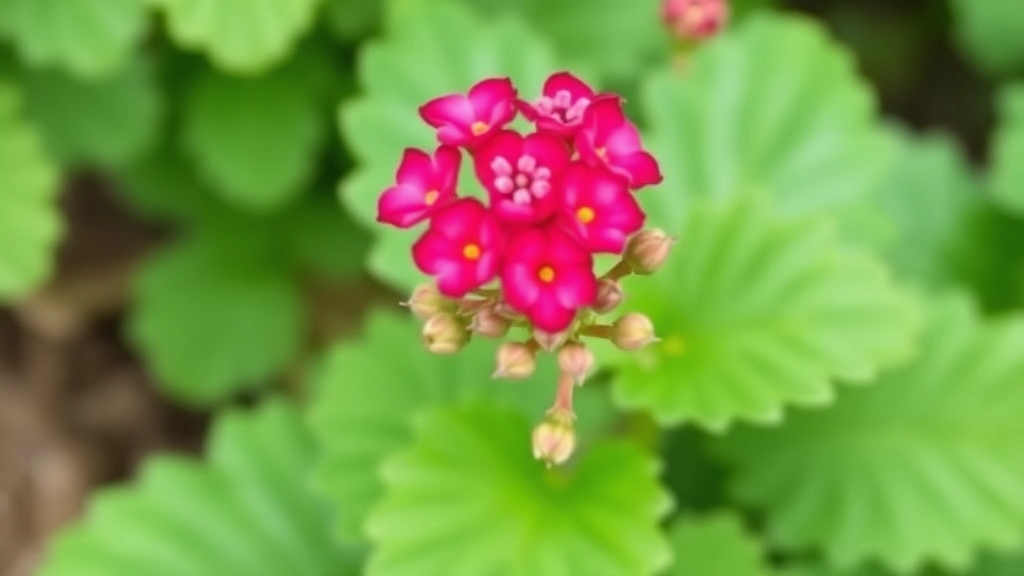
Alright, let’s dive into the specific traits of Kalanchoe blossfeldiana. This plant’s got some unique features that make it stand out from the crowd.
Ever wondered what makes Kalanchoe blossfeldiana so special? Let me break it down for you:
Flowering Habits
- Year-round bloomer: Unlike some fussy plants, this one’s always ready to put on a show
- Clusters of small, tubular flowers: They come in a variety of colours – red, pink, orange, yellow, you name it
- Long-lasting blooms: We’re talking weeks, not days
Leaf Structure
- Thick, fleshy leaves: Perfect for storing water, making it a low-maintenance dream
- Scalloped edges: Gives the plant a bit of extra character
- Dark green colour: Provides a nice contrast to those vibrant flowers
Growth Pattern
- Compact and bushy: Ideal for small spaces or as part of a larger display
- Slow-growing: No need to worry about it taking over your windowsill
Adaptability
- Thrives in various light conditions: From full sun to partial shade, it’s not too picky
- Drought-tolerant: Forgot to water it? No worries, it’ll forgive you
Unique Features
- CAM photosynthesis: It’s got a special way of breathing that helps it conserve water
- Easy propagation: You can grow new plants from cuttings – it’s like magic!
Here’s the thing about Kalanchoe blossfeldiana: it’s tough as nails but looks like a million bucks. It’s the kind of plant that makes you look like a green-thumb genius without breaking a sweat.
I’ve seen people use these in all sorts of creative ways. One friend of mine has a whole rainbow of them lined up on her office desk – talk about a mood booster during those long work days!
So, whether you’re a plant newbie or a seasoned pro, Kalanchoe blossfeldiana’s got something for everyone. It’s a real crowd-pleaser with its specific traits that make it stand out in the world of succulents.
Morphological Features
Let’s dive into the cool bits of Kalanchoe blossfeldiana’s look, shall we?
These little beauties are like nature’s own living sculptures.
First up, the leaves. They’re thick and fleshy, perfect for holding water.
Think of them as the plant’s personal water bottles.
They’re usually dark green, sometimes with a reddish tinge. Fancy, right?
Now, the flowers – that’s where the real show begins.
Imagine a burst of colour sitting atop the plant like a crown.
They come in reds, pinks, oranges, yellows – you name it.
It’s like a mini fireworks display, but it lasts for weeks!
The flowers are small, but they cluster together for maximum impact.
It’s nature’s way of saying, “Look at me!”
Here’s a quick rundown of the key features:
- Succulent leaves (water-storing champs)
- Thick stems (sturdy little fellows)
- Clustered flowers (party on top!)
- Compact growth habit (perfect for your windowsill)
But here’s the kicker – these plants are masters of adaptation.
In the wild, they might look a bit different from your potted pal.
They’ve got tricks up their sleeves to survive harsh conditions.
It’s like they’re wearing a survival suit, but it’s all natural.
So next time you look at your Kalanchoe, remember – it’s a tough cookie in a pretty package.
These morphological features make Kalanchoe blossfeldiana a real stunner in the plant world.
Natural Habitat and Geographic Distribution
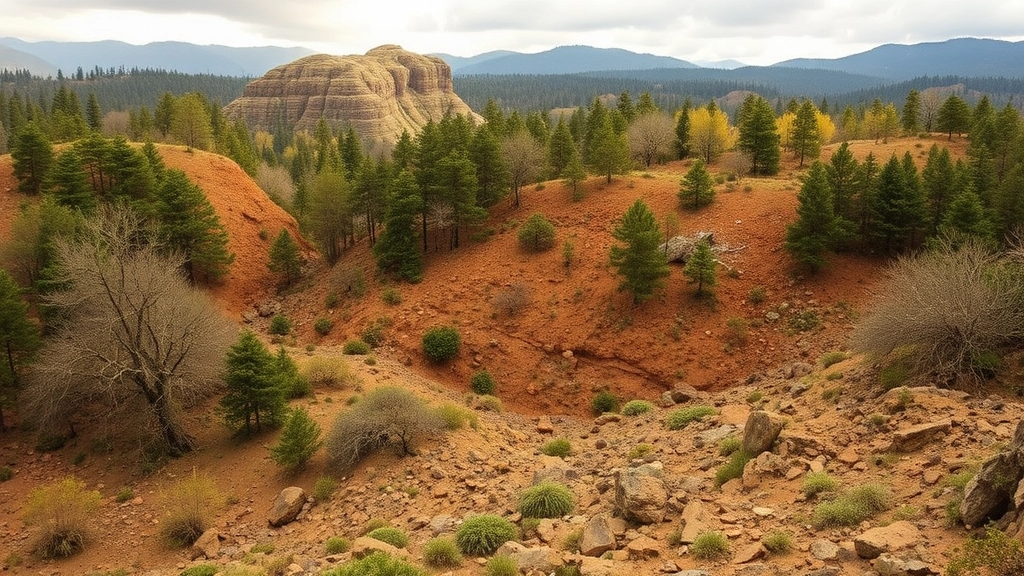
Where’s Kalanchoe blossfeldiana really from?
Let’s dive into the roots of this popular houseplant. I’ve always been fascinated by how plants adapt to different environments, and Kalanchoe blossfeldiana is no exception.
Original Stomping Grounds
Kalanchoe blossfeldiana, or flaming katy as some of us call it, hails from Madagascar. Yep, that big island off the coast of Africa. It’s not just lemurs and baobab trees over there!
Madagascar’s Unique Climate
- Hot and humid coastal areas
- Dry, arid interior regions
- Varied elevations from sea level to mountains
This diverse landscape is why our Kalanchoe friend is so adaptable. It’s used to dealing with different conditions, which is great news for us plant lovers.
Spreading Its Wings
While Madagascar is home base, Kalanchoe blossfeldiana has become a globetrotter. Thanks to its popularity as a houseplant and its easy-going nature, you’ll find it:
- In gardens across tropical and subtropical regions
- Thriving in greenhouses worldwide
- Brightening up homes on every continent (except Antarctica, obviously)
Why It Loves Where It Lives
Kalanchoe blossfeldiana is a tough cookie. In its natural habitat, it’s adapted to:
- Survive periods of drought
- Handle intense sunlight
- Grow in rocky, well-drained soil
These traits make it a champ at surviving in various climates and as a houseplant. It’s like the plant version of a world traveller – ready for anything!
The Takeaway
Understanding where Kalanchoe blossfeldiana comes from helps us give it the best care. Whether you’re growing it in your garden or on your windowsill, remember its Madagascar roots. Give it plenty of light, don’t overwater, and watch it thrive!
So next time you’re looking at your Kalanchoe, think about its journey from the diverse landscapes of Madagascar to your home. Pretty cool, right?
Cultivation Practices
Let’s talk about growing Kalanchoe Blossfeldiana, shall we?
It’s not rocket science, but there are a few tricks to keep in mind.
First off, these succulents love light, but not too much direct sun.
Think bright, indirect light – like that sweet spot near a window.
Soil’s gotta drain well. Nobody likes wet feet, especially not Kalanchoe.
Mix some perlite or sand into regular potting soil. Boom, perfect drainage.
Watering and Temperature
Watering? Less is more, folks.
Let the soil dry out between waterings. Overwatering’s a killer.
Temperature-wise, they’re pretty chill. Room temp works great.
But keep ’em away from cold drafts. They’re not fans of the chilly life.
Fertilising and Pruning
Fertiliser? Sure, but go easy.
A diluted, balanced feed every few weeks during growing season does the trick.
Pruning’s your friend for bushier plants.
Snip off spent blooms and leggy stems. It’s like a spa day for your Kalanchoe.
Propagation
Propagation’s a breeze too.
Stem cuttings or leaf cuttings – both work like a charm.
Remember, these plants are tough cookies.
They can handle a bit of neglect, but show ’em some love and they’ll thrive.
Any questions about growing Kalanchoe Blossfeldiana? Hit me up!
Popular Varieties and Hybrids
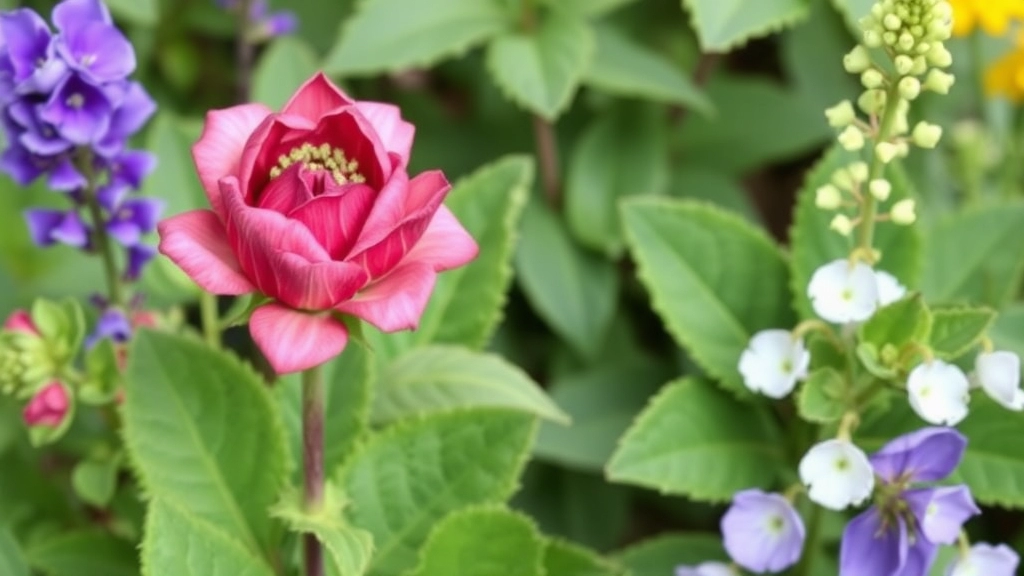
Alright, let’s dive into the world of Kalanchoe Blossfeldiana varieties and hybrids. Trust me, this stuff’s way more exciting than it sounds!
So, you’re probably wondering, “Why should I care about different types of this plant?” Well, let me tell you, it’s like choosing your favourite ice cream flavour – there’s something for everyone.
Popular Varieties
Here’s the scoop on some fan favourites:
- ‘Calandiva’: This one’s a real showstopper with its double flowers. It’s like the plant equivalent of a fancy dress party.
- ‘Flaming Katy‘: With bright red blooms, it’s the life of the party in any garden.
- ‘Golden Bells’: Imagine tiny golden bells hanging from your plant. That’s what this variety looks like!
- ‘Simone’: This pink beauty is perfect for those who want a softer look.
Hybrid Heroes
Now, let’s talk hybrids. These are like the cool kids of the plant world, mixing the best traits of different varieties:
- ‘Kalanchoe x houghtonii’: This hybrid’s got a bit of an attitude. It’s tough, it spreads fast, and it’s got these funky little plantlets on its leaves.
- ‘Queen of Kalanchoe’: Sounds posh, right? It’s a cross between K. blossfeldiana and K. laciniata, giving you bigger flowers and more interesting leaves.
Why Bother with Different Varieties?
You might be thinking, “Why not just stick with one type?” Well, here’s the deal:
- Different colours: From reds to pinks to yellows, you can create a rainbow in your garden.
- Varied blooming times: With different varieties, you can have flowers all year round.
- Unique leaf shapes: Some have smooth edges, others are wavy. It’s like a buffet for your eyes!
Choosing Your Kalanchoe
When picking your Kalanchoe, think about:
- Your climate: Some varieties are tougher than others.
- Your space: How big do you want it to grow?
- Your style: Want something classic or a bit quirky?
Remember, the world of Kalanchoe Blossfeldiana hybrids is always growing. New crosses are being made all the time, so keep your eyes peeled for the next big thing in the Kalanchoe world!
Horticultural and Medicinal Applications
Kalanchoe Blossfeldiana: More Than Just a Pretty Face
Ever wondered if that cute little plant on your windowsill could do more than just look good?
Well, let me tell you, Kalanchoe Blossfeldiana is a real multitasker.
Here’s the deal with this plant’s horticultural and medicinal applications:
Horticultural Superstar:
- Easy to grow indoors – perfect for newbie plant parents
- Adds a pop of colour to any room (trust me, your Instagram will thank you)
- Great for small spaces – apartments, offices, you name it
- Low maintenance – ideal for busy folks or those with a not-so-green thumb
Medicinal Magic:
- Contains compounds that might help with inflammation
- Some folks use it for minor cuts and bruises
- Traditional medicine has used it for ages (but always check with a doc first)
Fun fact: In some cultures, they believe it brings good luck. Can’t hurt, right?
But here’s the kicker – it’s not just about looking pretty or feeling better.
Kalanchoe Blossfeldiana is a conversation starter. It’s a way to connect with nature, even in the middle of a concrete jungle.
So next time you’re eyeing up a Kalanchoe, remember – it’s not just a plant, it’s a little powerhouse of potential.
And who knows? It might just be the start of your own indoor jungle adventure.
Kalanchoe Blossfeldiana: small plant, big impact. Who’d have thought?
Conservation and Environmental Concerns
Hey there, plant lovers! Let’s chat about something close to my heart – the conservation and environmental concerns surrounding our beloved Kalanchoe Blossfeldiana. It’s not all sunshine and pretty flowers, you know?
Environmental Impact
First things first, we’ve got to talk about how these plants are affecting our environment. While they’re gorgeous in our homes and gardens, they can be a bit of a troublemaker in the wild.
- Invasive tendencies: In some places, Kalanchoe Blossfeldiana has gone rogue, spreading like wildfire and pushing out native plants.
- Ecosystem disruption: When they take over, they can mess up the local food chains and habitats.
- Water hogging: These succulents are thirsty little buggers, which can be a problem in dry areas.
Conservation Efforts
Now, don’t get me wrong – it’s not all doom and gloom. There are some awesome people out there working hard to keep things in check.
- Controlled cultivation: Growers are getting smarter about where and how they plant these beauties.
- Education programs: Teaching folks about responsible gardening is a big deal.
- Removal initiatives: In some places, they’re actively removing Kalanchoe from sensitive areas.
What Can We Do?
Alright, so here’s where you come in. We can all do our bit to help out:
- Stick to native plants: When possible, choose local species for your garden.
- Contain your Kalanchoe: If you love ’em, keep ’em in pots or controlled areas.
- Spread the word: Chat with your mates about responsible plant care.
- Support conservation: Get involved with local environmental groups.
The Future of Kalanchoe Blossfeldiana
Looking ahead, we’ve got to find that sweet spot between enjoying these stunning plants and protecting our ecosystems. It’s all about balance, right?
- Research: Scientists are working on developing less invasive varieties.
- Policy changes: Some places are considering restrictions on Kalanchoe sales and cultivation.
- Sustainable practices: The horticultural industry is stepping up its game with more eco-friendly growing methods.
At the end of the day, it’s up to us to be smart about how we handle Kalanchoe Blossfeldiana. We can enjoy their beauty without letting them run wild. So, let’s keep loving these plants, but let’s do it responsibly, yeah?
Frequently Asked Questions about Kalanchoe Blossfeldiana Taxonomy
What is the scientific classification of Kalanchoe Blossfeldiana?
Kalanchoe Blossfeldiana belongs to the Kingdom Plantae, Division Tracheophyta, Class Magnoliopsida, Order Saxifragales, Family Crassulaceae, Genus Kalanchoe, and Species K. blossfeldiana.
Why is understanding the taxonomy of Kalanchoe Blossfeldiana important?
Understanding the taxonomy helps in proper plant care, predicting behavior in different environments, and understanding its relationships with other plants. It also aids in scientific research and conservation efforts.
How is Kalanchoe Blossfeldiana related to other succulents?
Kalanchoe Blossfeldiana is part of the Crassulaceae family, which includes other popular succulents like Jade plants and Echeverias. This family connection explains its succulent characteristics and water-storing abilities.
What does the species name “blossfeldiana” signify?
The species name “blossfeldiana” honors Robert Blossfeld, a German botanist who played a significant role in the plant’s discovery and study.
Are there any unique taxonomic features of Kalanchoe Blossfeldiana?
Yes, Kalanchoe Blossfeldiana is known for its CAM photosynthesis, a special way of breathing that helps conserve water. It also has the ability to reproduce asexually through plantlets, which is a distinctive feature within its taxonomic group.
How does the taxonomy of Kalanchoe Blossfeldiana influence its cultivation?
Its taxonomic classification as a succulent in the Crassulaceae family informs growers about its drought tolerance, light requirements, and soil preferences, which are crucial for successful cultivation.
Are there any taxonomic variations or subspecies of Kalanchoe Blossfeldiana?
While there are numerous cultivars and hybrids of Kalanchoe Blossfeldiana, taxonomically recognized subspecies are not common. Most variations are horticultural rather than taxonomic.
How does the taxonomy of Kalanchoe Blossfeldiana relate to its natural habitat?
The plant’s taxonomic classification reflects its origins in Madagascar, indicating its adaptation to diverse climates ranging from hot and humid coastal areas to dry, arid interior regions.
References
-
Kalanchoe blossfeldiana – Wikipedia https://en.wikipedia.org/wiki/Kalanchoe_blossfeldiana
-
Kalanchoe blossfeldiana – Missouri Botanical Garden https://www.missouribotanicalgarden.org/PlantFinder/PlantFinderDetails.aspx?taxonid=281350
-
Kalanchoe blossfeldiana – Royal Horticultural Society https://www.rhs.org.uk/plants/11936/kalanchoe-blossfeldiana/details

